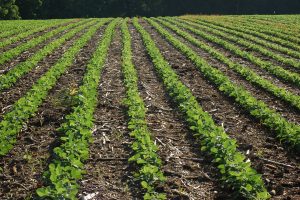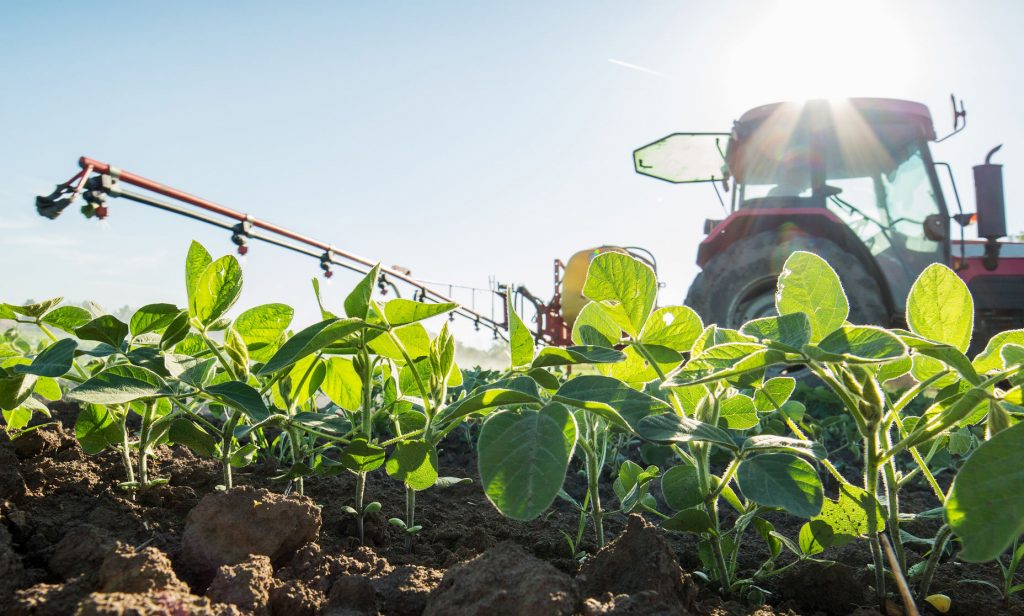Dan Charles, NPR’s widely respected food and agriculture correspondent, has written extensively about the dicamba drift crisis over the past couple of years (here are just a few of his pieces that were posted to the Managing Weeds for Healthy Kids site).
In his latest NPR piece entitled “Is Fear Driving Sales Of Monsanto’s Dicamba-Proof Soybeans?,” he highlights that many farmers feel forced to make the switch to Xtend soybean seed to protect their fields when neighbors start using seed varieties engineered to resist dicamba.
First introduced in 2016, Xtend soybeans were developed by Monsanto. Just two years later in 2018, the “Xtend Technology Package” generated close to one billion dollars of revenue from seed, GE-trait licensing fees paid by other seed companies, and herbicide sales for Bayer, Monsanto’s new owner. Dan Charles reports that “in just the past three years, Xtend soybeans have taken over 60 to 75 percent of the American soybean market” (Charles, 2019), with comparable inroads in the GE cotton seed market.
Many farmers have switched to higher-cost Xtend seeds and spraying dicamba because of this herbicide’s ability to still control glyphosate-resistant pigweed and other hard-to-control broadleaf weeds. Palmer amaranth is among the monster weeds resistant to glyphosate and other herbicides that are dramatically increasing the cost of weed management and frequency of control failures, while also posing serious problems on the farm and in nearby fields.
But, as ongoing litigation alleges, many farmers switch because they feel they have to protect their crops from the dicamba sprayed on their neighbor’s fields. This herbicide is highly volatile. Even the newly developed, supposedly less volatile formulations have proven to be prone to drift, despite claims by the companies that they would essentially eliminate the risk of volatilization and damage to nearby fields.
According to the herbicide manufacturers, applicators must follow a long list of complicated instructions to the “T’ in order to prevent spray from wandering off to damage natural areas and neighboring fields. And if dicamba moves and causes problems, it must be the applicators or farmers fault for not following the instructions or heeding warnings on the herbicide labels

Dan Charles quotes Randy Brazel, who grows soybeans along the Missouri/Tennessee border. “I just had to go along with the dicamba program whether I liked it or not,” says Brazel (Charles, 2019).
Once his neighbor informed him he would be planting Xtend soybeans and spraying dicamba, Brazel canceled his existing order for non-Xtend seeds and made the switch himself. Then he called his neighbors, and a domino effect ensued, as those neighbors called their neighbors, leading to most of the farmers in his area deciding to get on the dicamba bandwagon.
The federal lawsuit claims that not only did Monsanto, and then Bayer, know about the problems dicamba’s volatility would impose on farmers and rural communities, they used the fear of crop damage to help sell more Xtend seed.
Rob Robinson is a CEO of a Midwestern seed company quoted in the NPR piece. “We don’t believe in Xtend,” he says, “it’s too complicated. It’s very difficult to meet the requirements on the label, and it causes too many issues with neighbors” (Charles, 2019).
But, “seed companies will remind farmers that if they plant Xtend soybeans, they won’t see any damage from dicamba, so they won’t have those fights with neighbors.” In other words, it’s not just a side-effect of making the switch, “it’s part of the sales pitch for the new seeds” (Charles, 2019).
Bayer continues to assert any problems are caused by applicator failure to follow the label directions. They claim that the ~50% reduction in dicamba damage from 2017 to 2018 shows their applicator training is working. But, over the same period more and more farmers have made the switch to Xtend, leaving less and less vulnerable soybean acreage out there. (Of course all other trees, specialty crops, gardens, vines, and wild plants are bound to be even more seriously impacted – see our series of posts on dicamba damage for more).
We are tracking all these developments as states weigh dicamba restrictions for the 2019 growing season and Xtend-inspired lawsuits move through courts.
Stay tuned for what happens in crop year 2019, and don’t be surprised if the focus shifts dramatically from damage to soybeans (bound to decline), to just about all other broadleaf plants.
Source:
Dan Charles, “Is Fear Driving Sales Of Monsanto’s Dicamba-Proof Soybeans?,” NPR, February 7, 2019.

